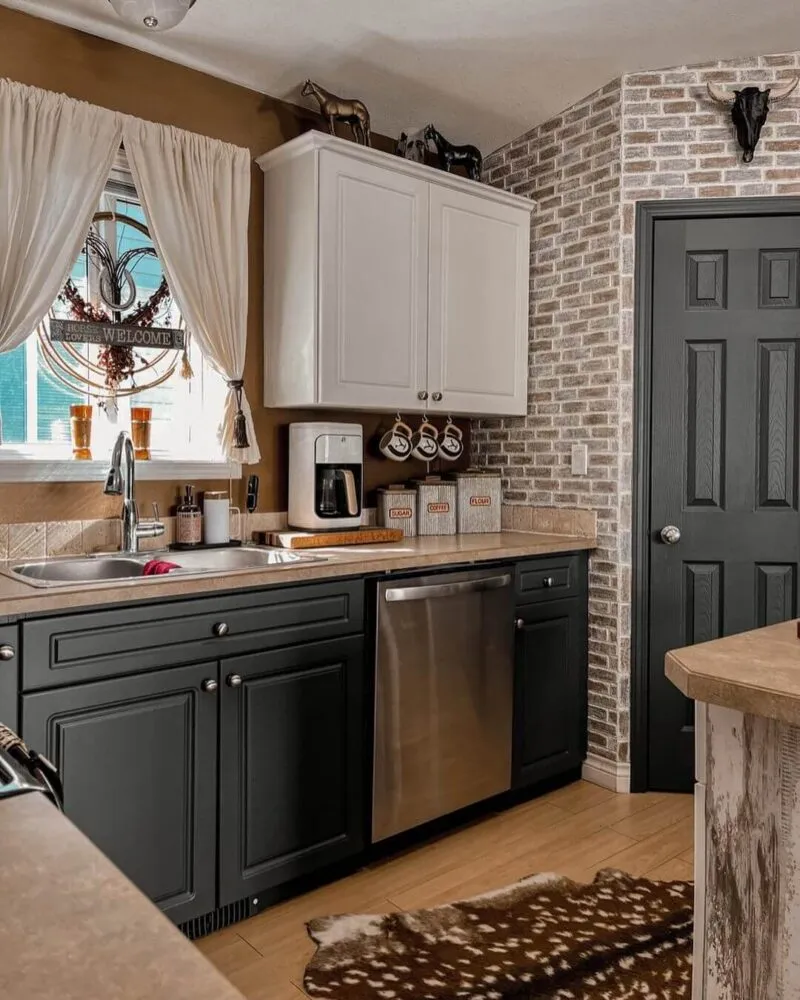Embracing the Western Kitchen Aesthetic
The allure of a Western kitchen stems from its ability to evoke a sense of warmth, comfort, and rugged elegance. It’s a style that celebrates the beauty of natural materials, earthy tones, and a connection to the outdoors. Whether you live in a sprawling ranch house or a city apartment, you can bring the spirit of the Wild West into your kitchen with the right design choices. Western design is not just about replicating a specific era; it’s about capturing the essence of a lifestyle that values simplicity, functionality, and a deep appreciation for the land. This style incorporates a blend of rustic charm, a dash of vintage flair, and a touch of modern convenience, creating a space that is both inviting and practical.
Rustic Charm and Warmth
Central to Western design is the incorporation of rustic elements that create a cozy and inviting atmosphere. The use of natural materials such as wood, stone, and leather is essential in establishing the foundation of this style. The goal is to create a space that feels lived-in and authentic, reflecting the history and heritage of the American West. This can be achieved through the use of reclaimed wood for cabinetry, exposed beams, or a farmhouse-style dining table. These materials introduce texture and visual interest, making the kitchen feel warm and welcoming. Adding elements like a stone backsplash or a wooden range hood will further enhance the rustic charm, providing a focal point and drawing the eye.
Use of Natural Materials
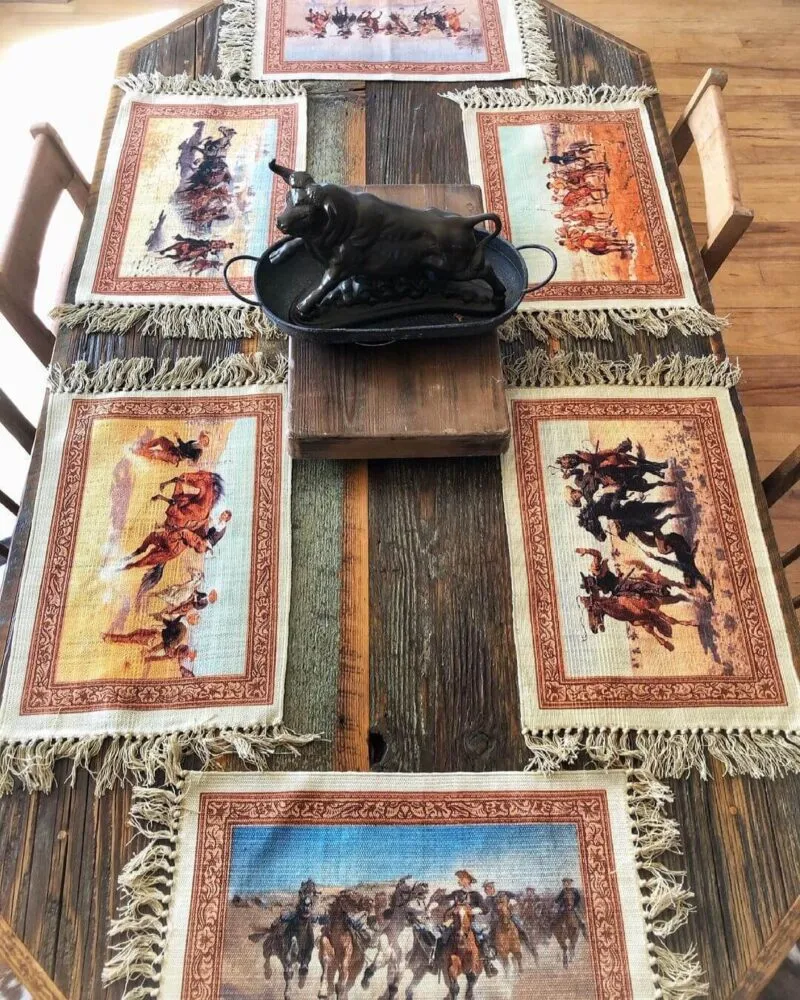
Natural materials are at the heart of the Western kitchen aesthetic. Incorporate wood, stone, and metal to create a space that feels connected to the outdoors. Consider using wood for flooring, countertops, and cabinets. Stone can be used for backsplashes or countertops. Wrought iron or bronze accents can add a touch of ruggedness. The goal is to incorporate textures and elements that reflect the natural beauty of the Western landscape. These materials add a touch of authenticity and can create a sense of history and character within the kitchen. The grain patterns of the wood, the variations in the stone, and the patina of the metal will contribute to the unique character of the space.
Color Palettes in Western Design
The color palette in a Western kitchen should be inspired by the colors of the desert, the mountains, and the open sky. Earthy tones are fundamental to this style, providing a warm and inviting atmosphere. Think of the deep browns of the earth, the warm tans of the desert sand, the rich reds of the sunset, and the cool blues of the sky. These colors are not only aesthetically pleasing but also evoke a sense of tranquility and peace, creating a space where one can relax and enjoy the simple pleasures of life. The colors provide a backdrop to highlight the natural materials and textures that are central to the Western design.
Earthy Tones and Warm Colors
Embrace a palette of earthy tones such as browns, tans, and creams. Accent with warm colors like reds, oranges, and yellows. These colors evoke a sense of warmth and comfort, making the kitchen feel inviting. Paint walls in neutral tones to create a backdrop for your decor. Use these colors in your accessories and textiles to create pops of color and interest. You can incorporate these colors through your choice of cabinets, countertops, and flooring to establish the primary colors of the room. Using warm colors helps to create a space that feels inviting and comfortable.
Incorporating Western Decor Elements
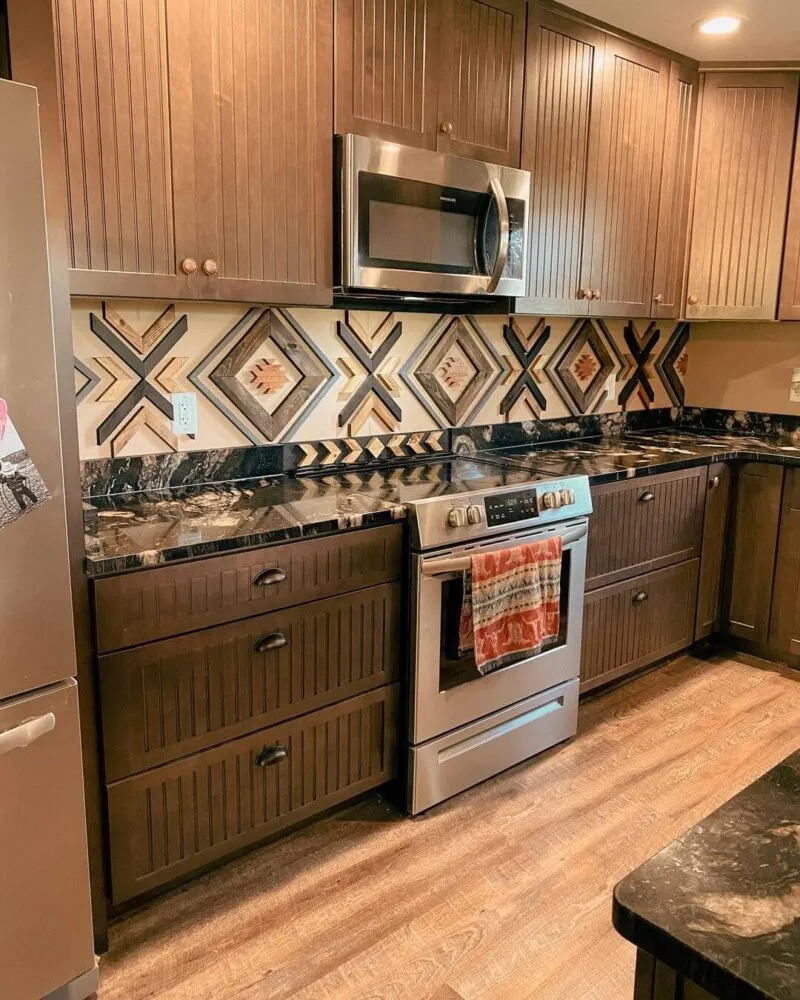
To truly capture the essence of a Western kitchen, incorporate specific decor elements that reflect the spirit of the West. This could include anything from cowboy-themed accessories to vintage pieces. You can achieve this by selecting the right accessories, textiles, and furniture pieces. These decorative touches can add depth and character to the space. They help to create a cohesive look that feels authentic and personalized. The goal is to strike a balance between functionality and style, ensuring the kitchen remains a welcoming and practical space.
Cowboy-Themed Accessories
Add accessories like cowboy hats, horseshoes, and rustic signs. Incorporate leather accents, such as bar stools with leather seats or leather-wrapped cabinet pulls. Consider using Western-themed artwork, such as paintings of landscapes or cowboys. Even small details, such as a cactus in a pot, can contribute to the theme. These accessories can be incorporated in various ways, such as through kitchen utensils, mugs, and dishware, as well as decorative accents like figurines and artwork. They should be selected to create a cohesive and visually appealing space that reflects the Western theme.
Adding Vintage and Antique Pieces
Incorporate vintage or antique pieces to add character and charm. Consider a vintage enamelware pitcher, antique cutting boards, or a rustic metal bread box. These items add history and create a sense of depth. Look for items with a weathered appearance, as they will contribute to the overall rustic aesthetic. These vintage and antique finds bring a sense of history and add a unique element to the kitchen’s design. They contribute to the kitchen’s character and individuality, ensuring that it is a space that feels authentic and personal.
Textiles and Fabrics
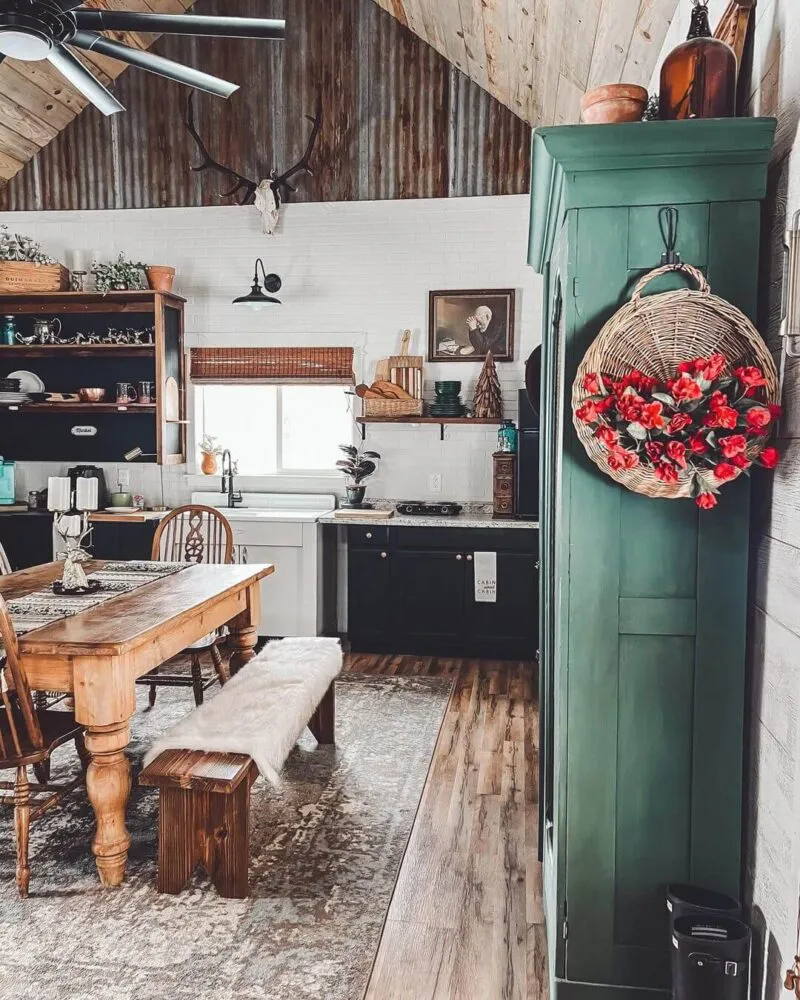
Textiles and fabrics play a crucial role in softening the look of a Western kitchen and adding a layer of comfort and visual interest. Consider using materials like woven cotton, burlap, and leather. These fabrics can be used in the form of curtains, cushions, tablecloths, and rugs. Textiles offer an opportunity to introduce color, pattern, and texture. The use of textiles is a simple yet effective way to infuse warmth and a sense of home into your kitchen. The materials chosen should evoke the spirit of the West. This can be achieved through the selection of patterns, colors, and textures.
Checkered and Floral Patterns
Utilize checkered patterns, floral prints, and geometric designs in your textiles. These patterns add visual interest and a touch of personality. Consider using these patterns on curtains, tablecloths, or dish towels. The selection of patterns should harmonize with the other elements of the kitchen. Consider using a checkered pattern on curtains to add a subtle touch of playfulness or a floral print to create a sense of warmth. When choosing patterns, make sure to consider the overall design theme to create a cohesive and appealing kitchen.
Functionality and Practicality in Western Kitchens
While aesthetics are important, the functionality of your kitchen is also crucial. A Western kitchen should be designed to be both beautiful and practical. This means ensuring there is ample workspace, adequate storage, and efficient traffic flow. The layout should support the activities that take place in the kitchen. Focus on creating a space that is not only visually appealing but also efficient and enjoyable to use. Practical design choices will ensure that your Western kitchen remains a place where you can cook, dine, and gather comfortably.
Open Shelving and Display
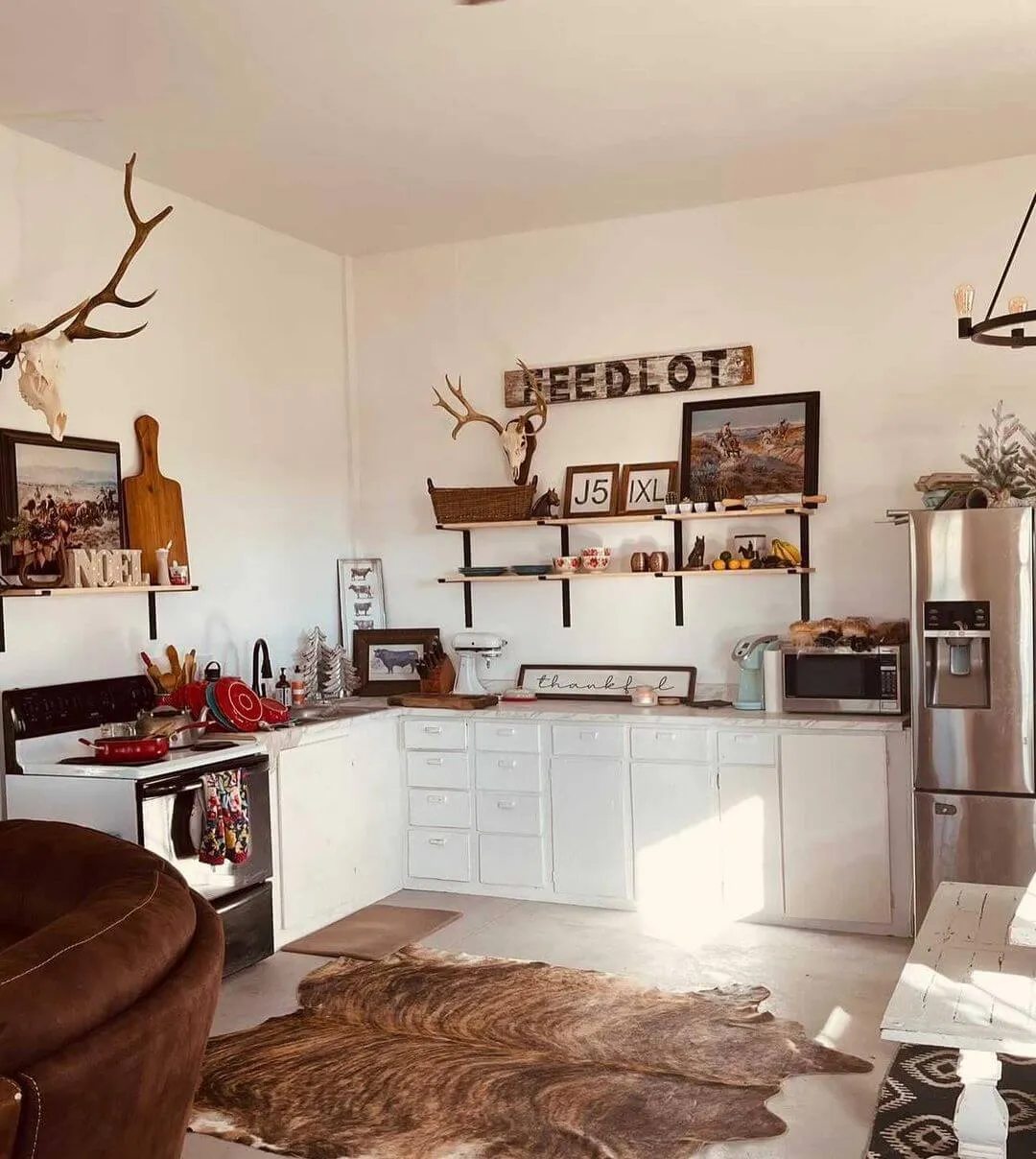
Incorporate open shelving to display your favorite dishware, cookbooks, and decorative items. This not only adds visual interest but also makes items easily accessible. Opt for shelves made from reclaimed wood or metal to enhance the rustic aesthetic. Arrange items on the shelves in a visually appealing way, mixing practical items with decorative objects. Open shelving creates a casual and inviting atmosphere. It encourages a sense of connection and makes it easy to show off your personal style. The use of open shelving encourages a sense of informality and allows for personalization, making the kitchen feel less formal.
Optimizing Kitchen Layout for Efficiency
Ensure your kitchen layout is efficient and maximizes workspace. Consider the work triangle, which is the relationship between the sink, stove, and refrigerator. Ensure there is enough counter space for food preparation and storage. Consider the placement of appliances and how they affect the flow of traffic within the kitchen. A well-designed kitchen provides the best possible working environment, ensuring that cooking and cleaning are easy and efficient. The layout must accommodate the various functions performed in the kitchen, making it a functional space.
Lighting and Ambiance
Lighting plays a pivotal role in creating the ambiance of a Western kitchen. The right lighting scheme can highlight the design elements and create a warm and inviting atmosphere. The goal is to create a space that feels both functional and aesthetically pleasing. Consider using a combination of different light sources to achieve this. The selection of lighting fixtures should contribute to the overall design theme and improve the kitchen’s ambiance. The right lighting scheme can enhance the textures and colors of the materials, creating an engaging and welcoming space.
Using Warm and Inviting Lighting
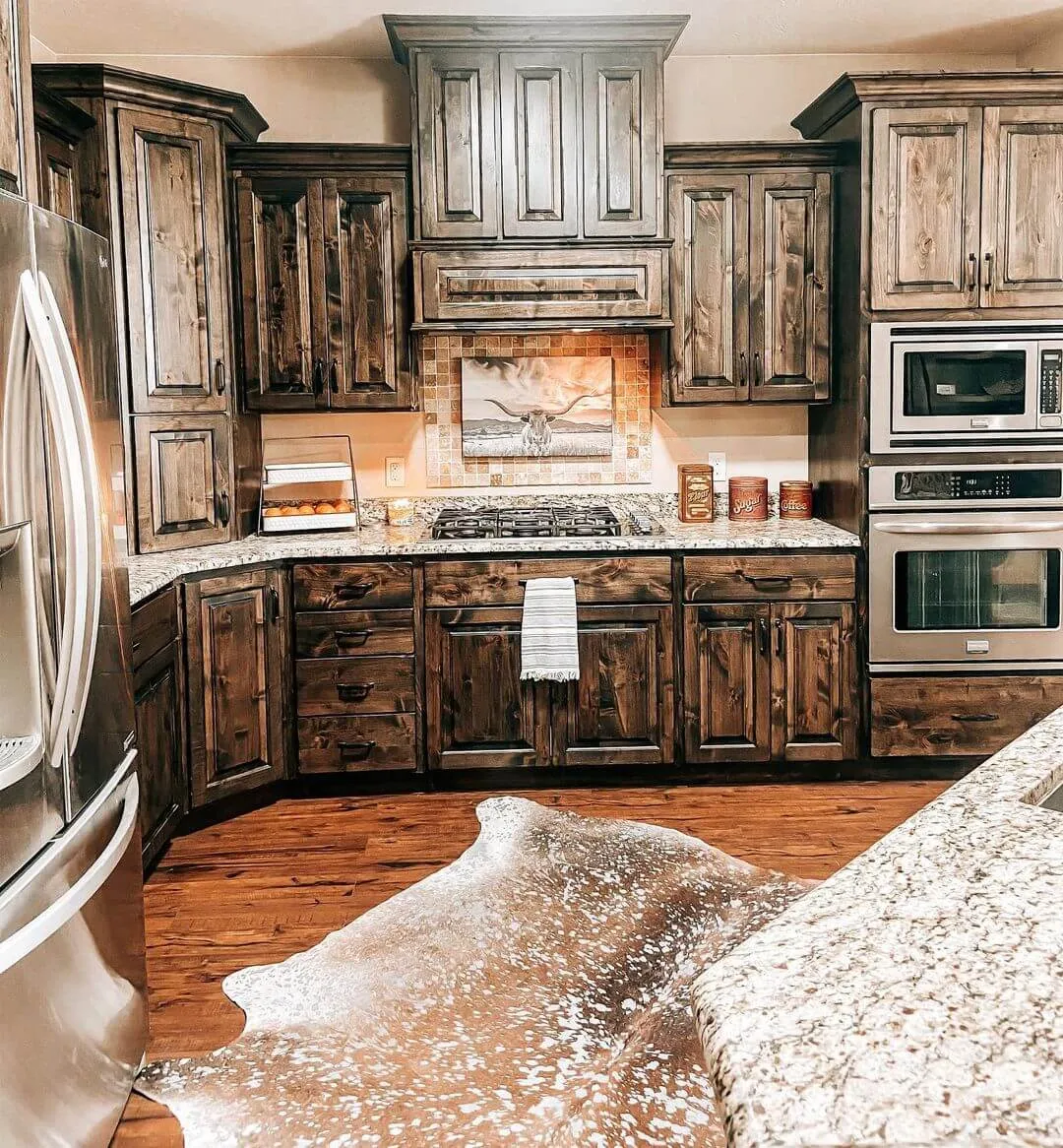
Opt for warm-toned lighting to create a cozy atmosphere. This can be achieved through the use of incandescent bulbs or LED bulbs that emit a warm glow. The goal is to avoid harsh, cold lighting that can make the kitchen feel sterile. Layer your lighting by using a combination of overhead lighting, task lighting, and accent lighting to create depth and dimension. Using dimmers allows you to adjust the light levels, creating a more inviting ambiance. Warm lighting promotes relaxation and creates a welcoming environment, making the kitchen a comfortable space.
Decorative Lighting Fixtures
Incorporate decorative lighting fixtures that complement the Western theme. Consider using pendant lights with rustic metal finishes, wrought iron chandeliers, or lantern-style sconces. These fixtures can serve as focal points, adding visual interest and personality. The choice of lighting fixtures should harmonize with the overall design scheme, adding both functionality and aesthetic appeal. The fixtures chosen can range from simple to elaborate, as long as they reflect the Western theme and contribute to the warm ambiance of the kitchen. The lighting fixtures selected can be a key element in creating a cohesive and visually appealing design.
